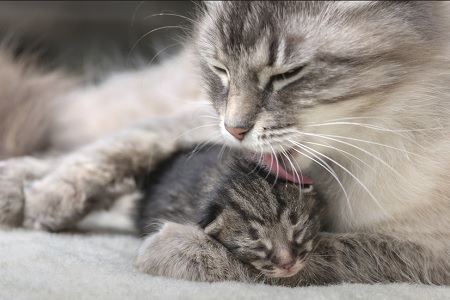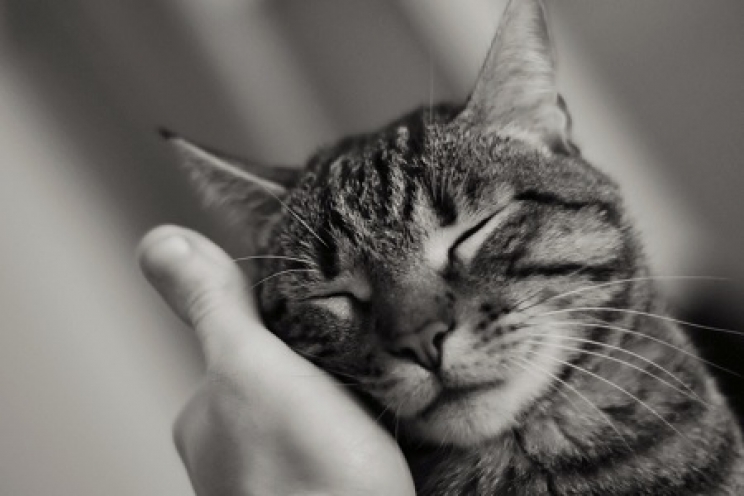Purring is one of the most special characteristics of our cats. What is its meaning? Let's find out together.
How is purring produced?
Purring is very often produced not only by the cat, but also by many other felines, such as the lynx or the cheetah. What we hear from the outside is the typical "ron ron" that owners like so much, because it always symbolized the affection of the cat.
In reality, the sound we can perceive when the cat purrs is the result of a series of events that occur within its body. Over the years, many hypotheses have been advanced to explain the functioning of the purr, but at the moment the most accredited are only two.
The first is that the purring would correspond to vibrations produced by the blood flowing in the large veins that carry the blood to the heart.
The second, on the other hand, states that the purring would be generated by the repetition of some events involving the diaphragm and the vocal cords. When the cat breathes, the air is emitted at great speed through the vocal cords, causing them to vibrate, with a series of alternating movements.
Until a few years ago, it was believed that cats had another pair of vocal cords, although this theory has not been properly demonstrated yet.
Why do cats purr?
Some owners will be disappointed with the explanations that we will see now.
Contrary to popular belief, in fact, cats would not purr to communicate affection and esteem to their "human", but for a long series of completely different reasons;
-
 To communicate with the mother cat: the mother cat begins to purr at the moment of birth, to stimulate the little ones to get closer to her body to feed themselves. At the same time, kittens also purr at only two days of life, especially while they are being nursed, probably to tell the mother that they are fine;
To communicate with the mother cat: the mother cat begins to purr at the moment of birth, to stimulate the little ones to get closer to her body to feed themselves. At the same time, kittens also purr at only two days of life, especially while they are being nursed, probably to tell the mother that they are fine; -
To relieve pain and stress: some cats purr to release stress or when they are not feeling well. In fact, when they feel pain or feel particularly agitated, they can begin to purr without other people or animals being around. It seems, in fact, that purring is able to stimulate the release of pain-relieving substances from the brain;
-
To relax: until a few years ago it was believed that purring had a communicative purpose only. Cats purr to send a message to humans or other animals. According to the most recent theories, however, felines could simply purr for themselves. This hypothesis could be confirmed by the fact that the purr frequency (25-50 Hz) is very similar to what can be recorded on our brain when we are relaxed. By producing the purr, therefore, the cat tries to relax, indirectly involving anyone who is nearby. This is why when we are close to our cat, we magically feel calmer;
- By regression to the infantile stage: when the cat begins to produce the typical "ron ron" sound without anyone around, he is probably so relaxed and dozing, that he is imagining that he is still a small, sweet newborn kitten, next to its mother's belly;
- To repair bones: According to the latest findings, the frequency of the cat's purr may also stimulate bone healing in the event of fractures or any other joint disorder. This theory could confirm the popular belief that cats heal faster than other animals. Cats probably don't really have seven lives, but they sure do have an edge.
In the light of this new information, some of us will continue to confirm without a doubt that our cats purrs simply because he loves us. Regardless of the conclusions, we can't help but appreciate the wonderful characteristics that make cats so special.










